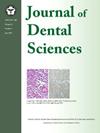Histological insights into the nasal superficial musculoaponeurotic system implicating to oral and maxillofacial surgery – A preliminary study from cadavers
IF 3.1
3区 医学
Q1 DENTISTRY, ORAL SURGERY & MEDICINE
引用次数: 0
Abstract
Background/purpose
The superficial musculoaponeurotic system (SMAS) represents a pivotal component of midfacial soft tissue architecture, with significant implications for both aesthetic and reconstructive interventions. However, the histological characteristics of the nasal SMAS remain inadequately elucidated, particularly within Asian populations. This study aimed to characterize the histological features of the nasal SMAS in adult Vietnamese cadavers and to assess its potential relevance to oral and maxillofacial surgical procedures involving the midface.
Materials and methods
Histological analyses were performed on eight formalin-fixed nasal tissue specimens obtained from adult Vietnamese cadavers. Sections encompassing the skin to the periosteum overlying the nasal bone were subjected to hematoxylin-eosin and Trichrome staining. Microscopic evaluation focused on the SMAS architecture, as well as associated vascular, neural, and adipose structures, assessed across five anatomical landmarks: glabella (G), nasion (N), sellion (S), kyphion (K), and rhinion (R).
Results
A distinct SMAS layer was identified in all specimens, exhibiting two primary fibrous configurations: vertically oriented septa at G, N, and S, and parallel-running fibers at K and R. Vascular and neural elements were consistently observed superficial to the SMAS, with variable intralayer presence. The superficial fat layer demonstrated greater thickness at G and N, whereas the deep fat layer was predominantly noted at G.
Conclusion
This study provides novel histological insights into the nasal SMAS, contributing to a more precise anatomical framework pertinent to oral and maxillofacial surgical planning. Understanding these structural nuances may enhance surgical safety and optimize aesthetic and functional outcomes in midfacial procedures.
与口腔颌面外科手术相关的鼻浅表肌腱神经系统的组织学研究——来自尸体的初步研究
背景/目的浅表肌腱神经系统(SMAS)是面中软组织结构的关键组成部分,在美学和重建干预方面具有重要意义。然而,鼻腔SMAS的组织学特征仍然不充分阐明,特别是在亚洲人群中。本研究旨在描述越南成年尸体鼻SMAS的组织学特征,并评估其与涉及中脸的口腔颌面外科手术的潜在相关性。材料和方法对8具经福尔马林固定的越南成年尸体鼻组织标本进行组织学分析。包括皮肤到覆盖鼻骨的骨膜的切片进行苏木精-伊红和三色染色。显微评价侧重于SMAS结构,以及相关的血管、神经和脂肪结构,评估了五个解剖标志:眉间(G)、鼻(N)、鞍(S)、后突(K)和鼻梁(R)。结果在所有标本中都发现了一个独特的SMAS层,表现出两种主要的纤维结构:垂直方向的间隔在G、N和S,平行运行的纤维在K和r。血管和神经元素一致地观察到SMAS表面,层内存在变化。在G和N处,浅表脂肪层的厚度更大,而在G处,深层脂肪层的厚度更大。结论:本研究为鼻SMAS提供了新的组织学见解,有助于为口腔颌面外科手术计划提供更精确的解剖学框架。了解这些结构上的细微差别可以提高手术安全性,优化面中手术的美观和功能结果。
本文章由计算机程序翻译,如有差异,请以英文原文为准。
求助全文
约1分钟内获得全文
求助全文
来源期刊

Journal of Dental Sciences
医学-牙科与口腔外科
CiteScore
5.10
自引率
14.30%
发文量
348
审稿时长
6 days
期刊介绍:
he Journal of Dental Sciences (JDS), published quarterly, is the official and open access publication of the Association for Dental Sciences of the Republic of China (ADS-ROC). The precedent journal of the JDS is the Chinese Dental Journal (CDJ) which had already been covered by MEDLINE in 1988. As the CDJ continued to prove its importance in the region, the ADS-ROC decided to move to the international community by publishing an English journal. Hence, the birth of the JDS in 2006. The JDS is indexed in the SCI Expanded since 2008. It is also indexed in Scopus, and EMCare, ScienceDirect, SIIC Data Bases.
The topics covered by the JDS include all fields of basic and clinical dentistry. Some manuscripts focusing on the study of certain endemic diseases such as dental caries and periodontal diseases in particular regions of any country as well as oral pre-cancers, oral cancers, and oral submucous fibrosis related to betel nut chewing habit are also considered for publication. Besides, the JDS also publishes articles about the efficacy of a new treatment modality on oral verrucous hyperplasia or early oral squamous cell carcinoma.
 求助内容:
求助内容: 应助结果提醒方式:
应助结果提醒方式:


